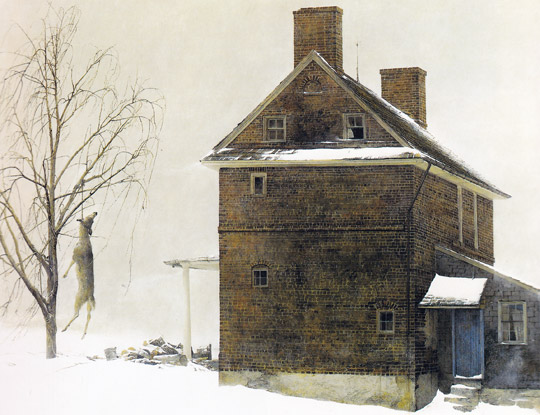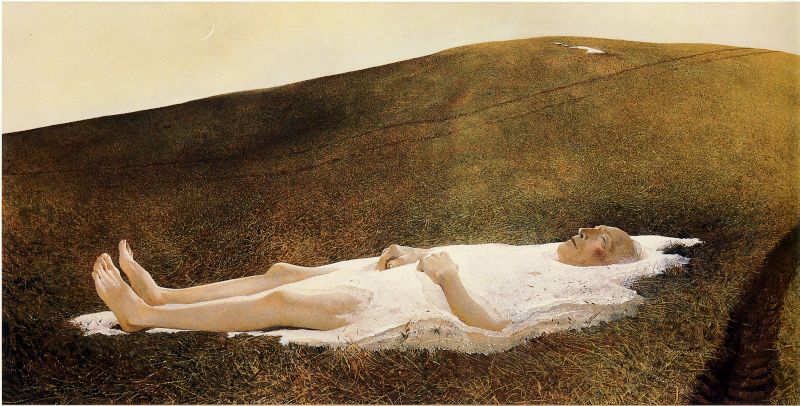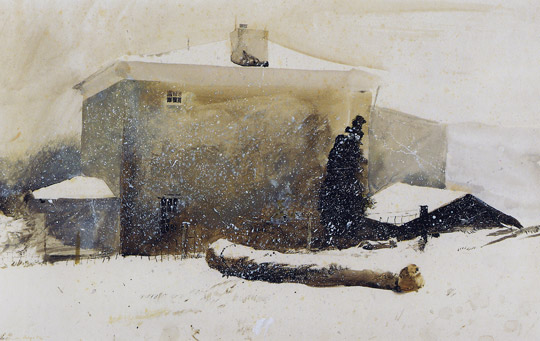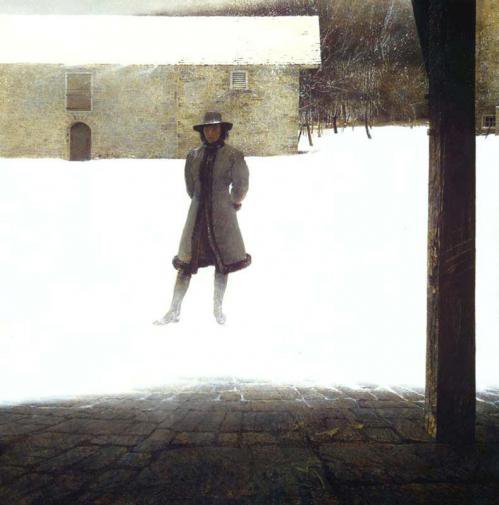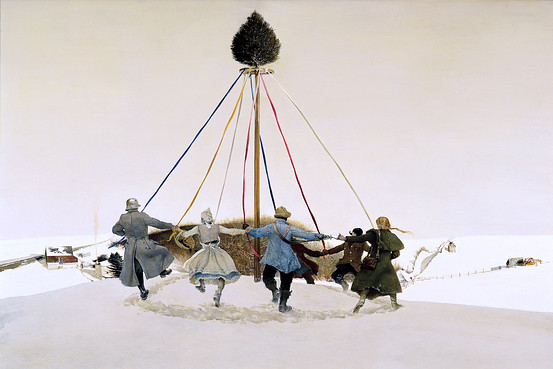“I prefer winter and fall, when you feel the bone structure of the landscape – the loneliness of it, the dead feeling of winter. Something waits beneath it, the whole story doesn’t show.” — Andrew Wyeth
I’m no fan of the cold and yet winter images and Christmas are among my favorite things in life. There is a calm about winter that is beautiful, harsh, and mysterious.
So, on this Solstice Day, with so few hours of sunshine to warm us, I asked a number of artists to send me some of their favorite winter paintings. I asked nearly 20 people, expecting about half to respond. In fact, everyone responded, often multiple times. Clearly, I am not the only one that finds both comfort and mystery in these images.
Without further ado, here are some of the images that some of today’s finest illustrators think of when they think of winter.
John Jude Palencar (a fine winter painter himself) had many great suggestions, as you’ll see below. First up, this beuatiful image from Giovanni Segantini, Return from the Woods.
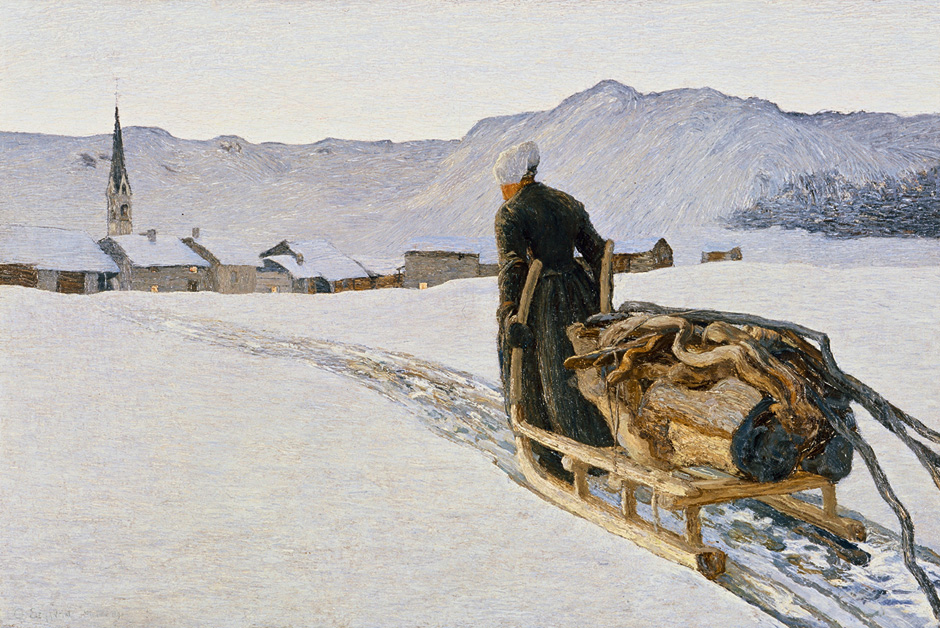
Jon Foster chose this Black Arrow painting. If he hadn’t, I would have. Easily one of my favorite N. C. Wyeth paintings.
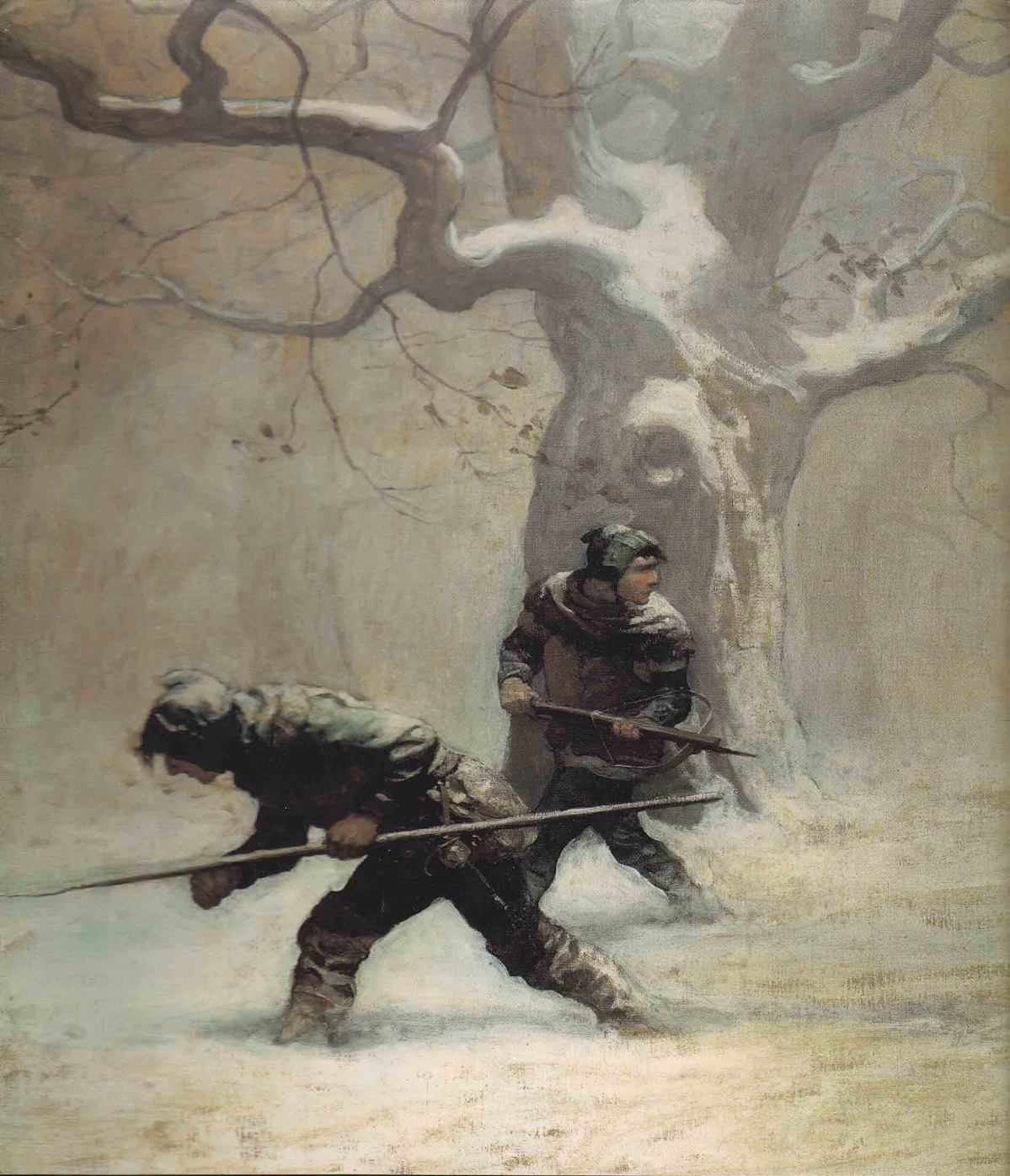
I love this John Collier…and it may have started me on a life long love affair of paintings with ice skaters. There is an inexplicable grace and wit to this painting that I just adore.
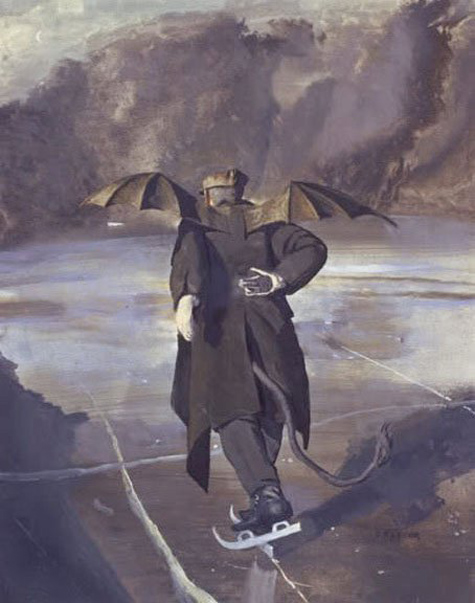
Canada’s Tom Thompson — a chunky and loose landscape painter that often used cigar box lids as his canvases. His work was the inspiration for the “Group of Seven,”
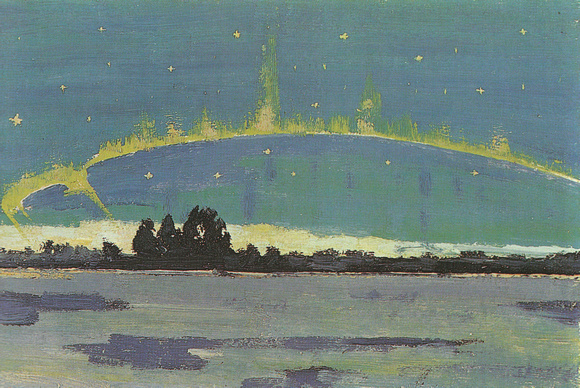
Of course it’s impossible to think of winter paintings without thinking of Rockwell Kent. Also known for his amazing black and white work.
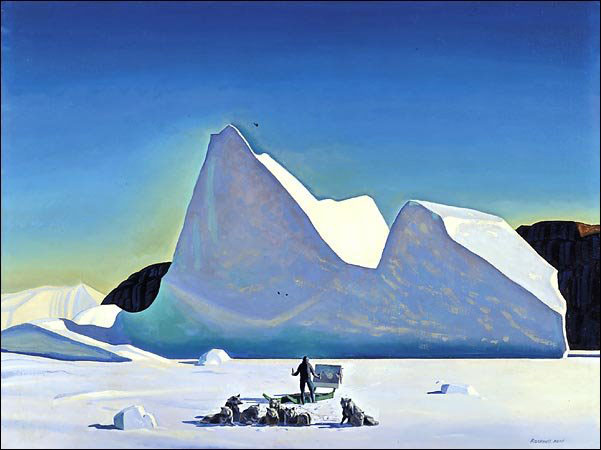
Rick Berry picked William Glacken’s Central Park Winter and Arnold Bocklin. (You can read John Coulthart’s intersting article on Bocklin’s influence in SFF.)
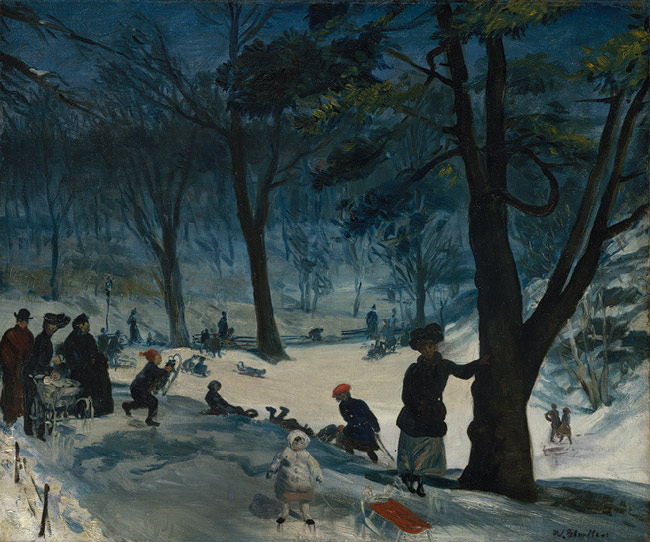
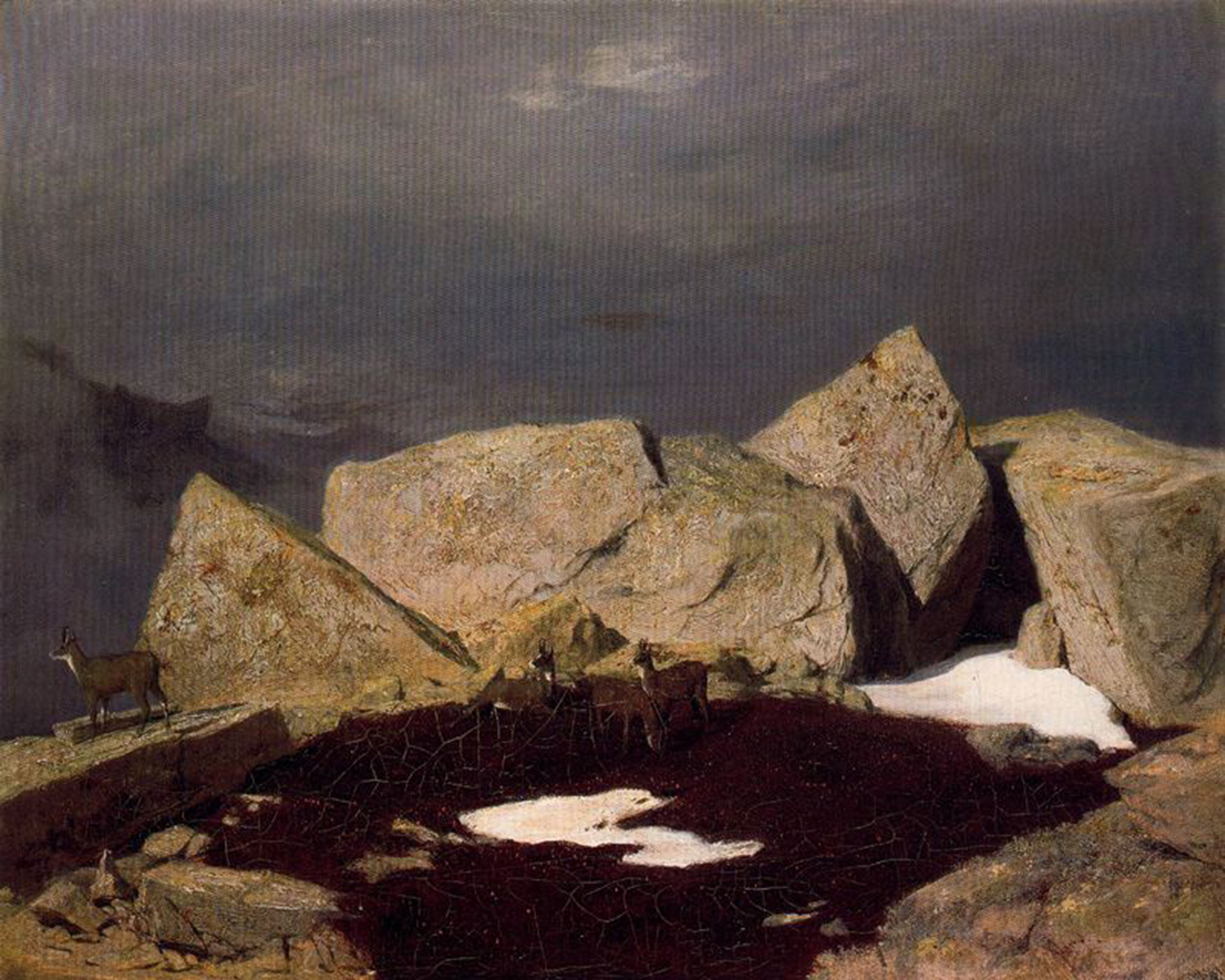
Scott Bakal on this Dean Cornwell, “I was fortunate enough, while helping curate a show at the New Britain Museum of American Art to see this painting up close and personal and hold it in my hands. It also happened to be one of the selected pieces to be in the exhibition. It is such a marvel of talent and ability to see up close. An artist could learn a lot about how to paint by just looking at this painting and a general viewer can easily be transported back into the early 20th century and marvel at the way life was back then.”
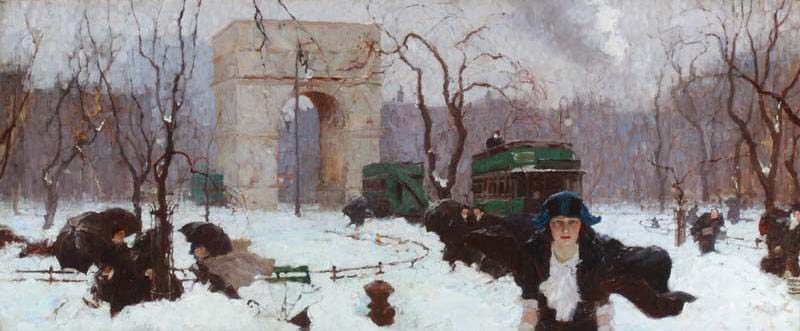
Charles Vess brought up this incredibly strong N. C. Wyeth painting, The Magician and the Maid of Beauty.
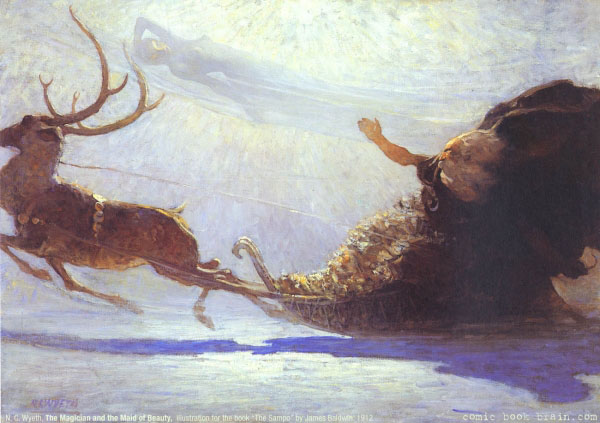
Arnie Fenner, the co-creator of Spectrum: Fantastic Art, and publisher of many books on Frank Frazetta went with Frank’s Snow Giants. Dave Seeley, often a fan of gutsy brushwork, also picked this one.
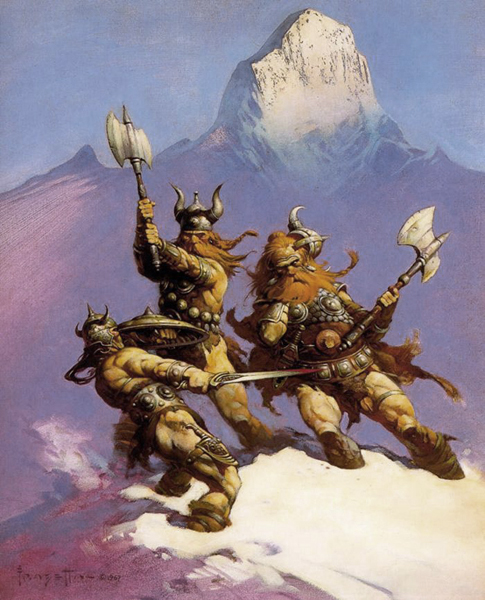
Chris McGrath wrote in, “This came to mind because it is the first illustration I saw that made me decide to become a book cover artist. I was 10 years old and my uncle had one of those Bantam Frazetta books out on his table and it was open to this piece. Instantly, I was hooked and blown away. My career path was set.”
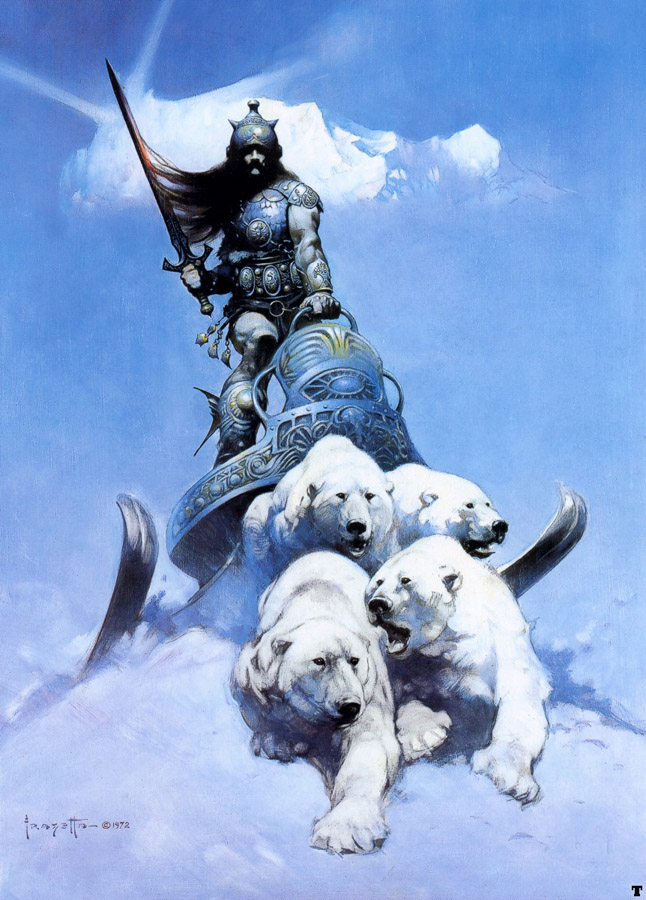
Justin Sweet had what I’m sure many would consider a dream-job as concept artist on Narnia: The Lion, The Witch, and the Wardrobe.
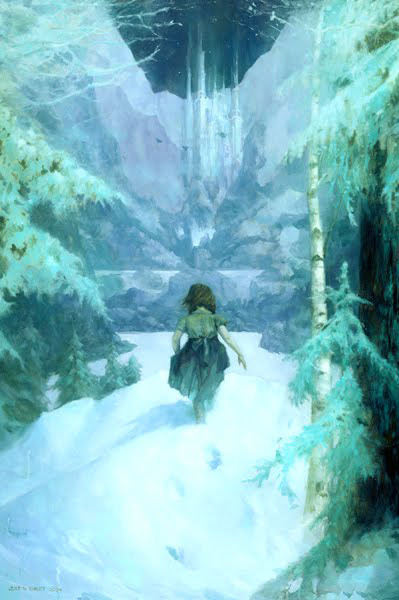
Charles Vess with two delightful images from John Buaer, a “Swedish artist, and a sure enough favorite around my studio, Bauer worked during the early years of the last century. There’s a museum devoted to his work in Sweden and you all should visit it!”
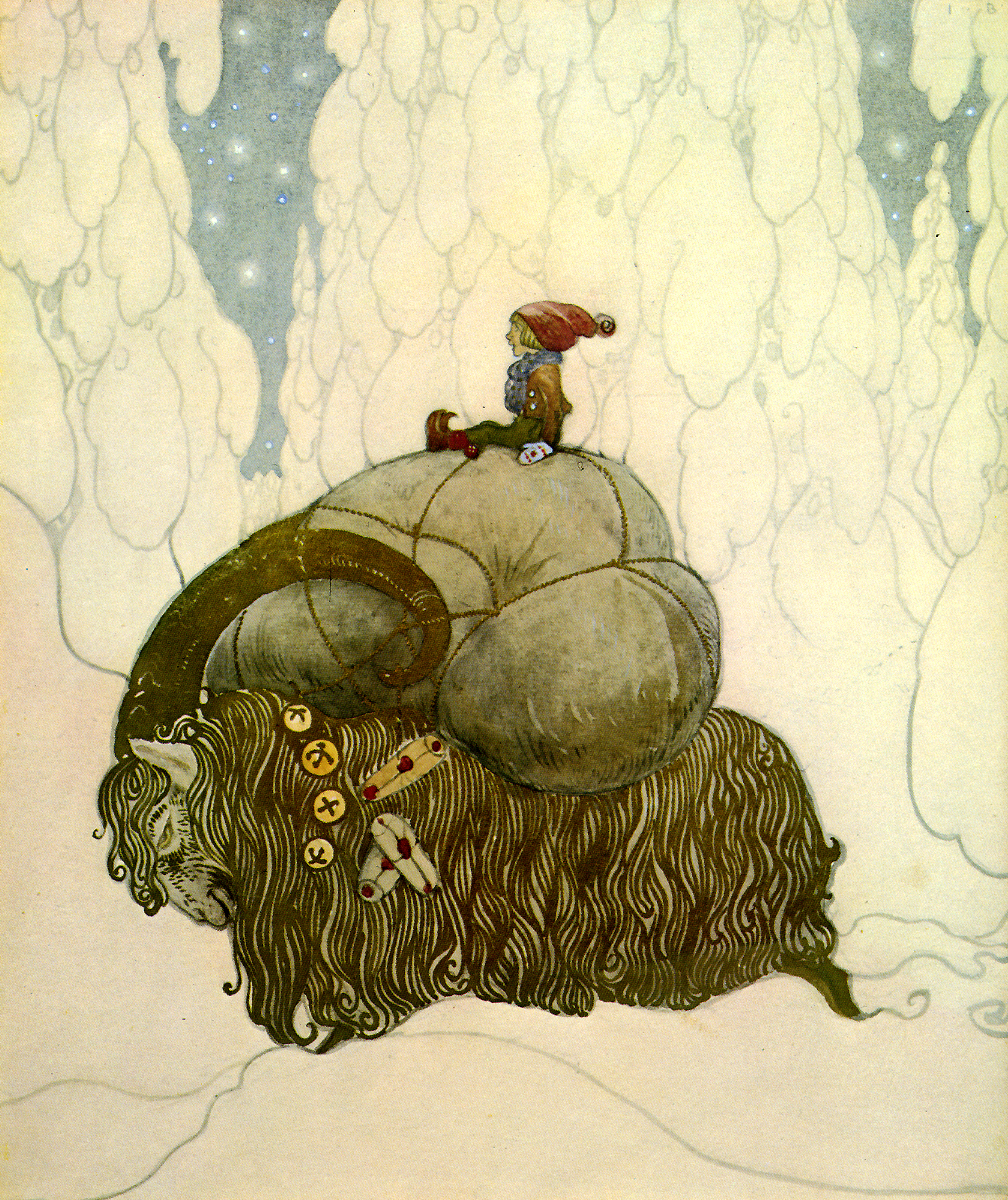
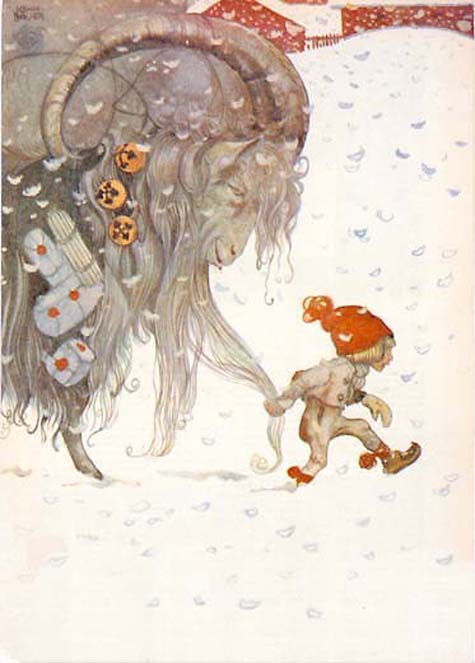
Rick Berry’s work often has a calligraphic quality to the brushwork and a limited color pallet, so it didn’t surprise me that he picked Japanese painter Kano Sansetsu.
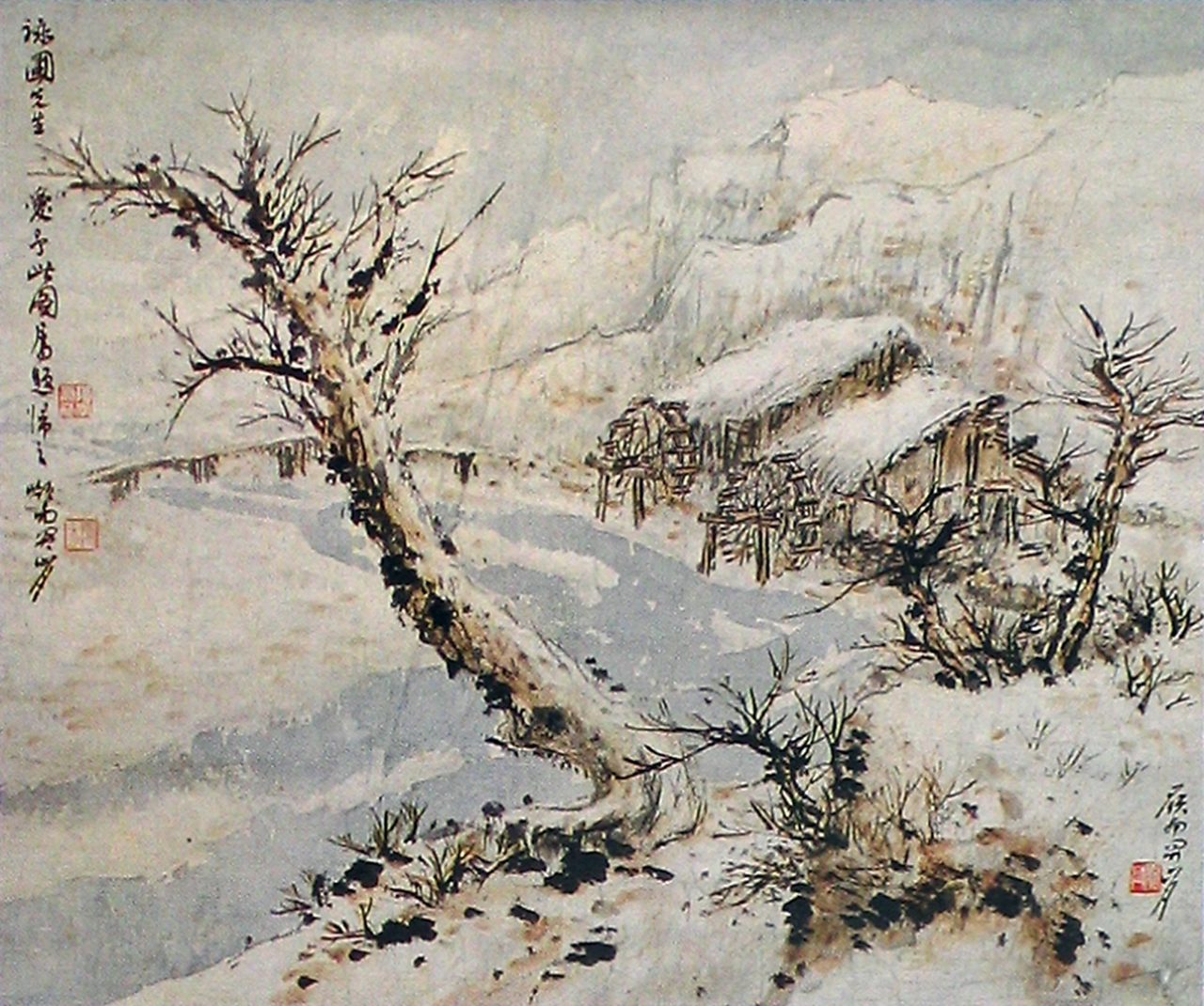
The great Russian painter Ivan Biliban, via Charles Vess.
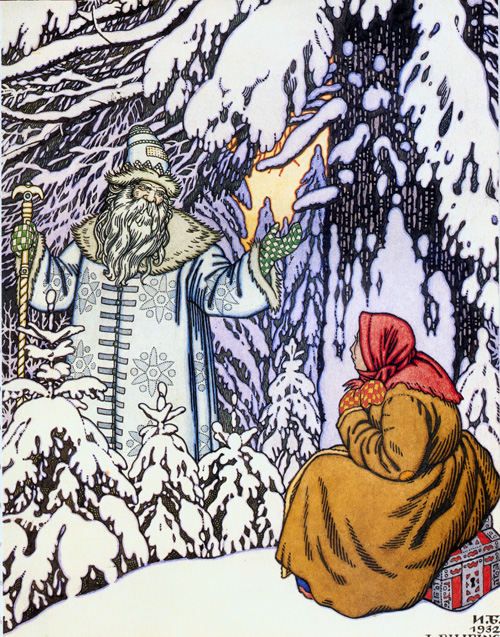
Also from Charles Vess, “Hermann Vogel is a virtually forgotten German artist who worked from (approximately) 1890s through the early teens of the 20th century. He illustrated a spectacular edition of Grimm’s Fairy Tales with over 300 pictures.” (If you ever need an expert on storybook and folk tale art, Charlie is your guy.)
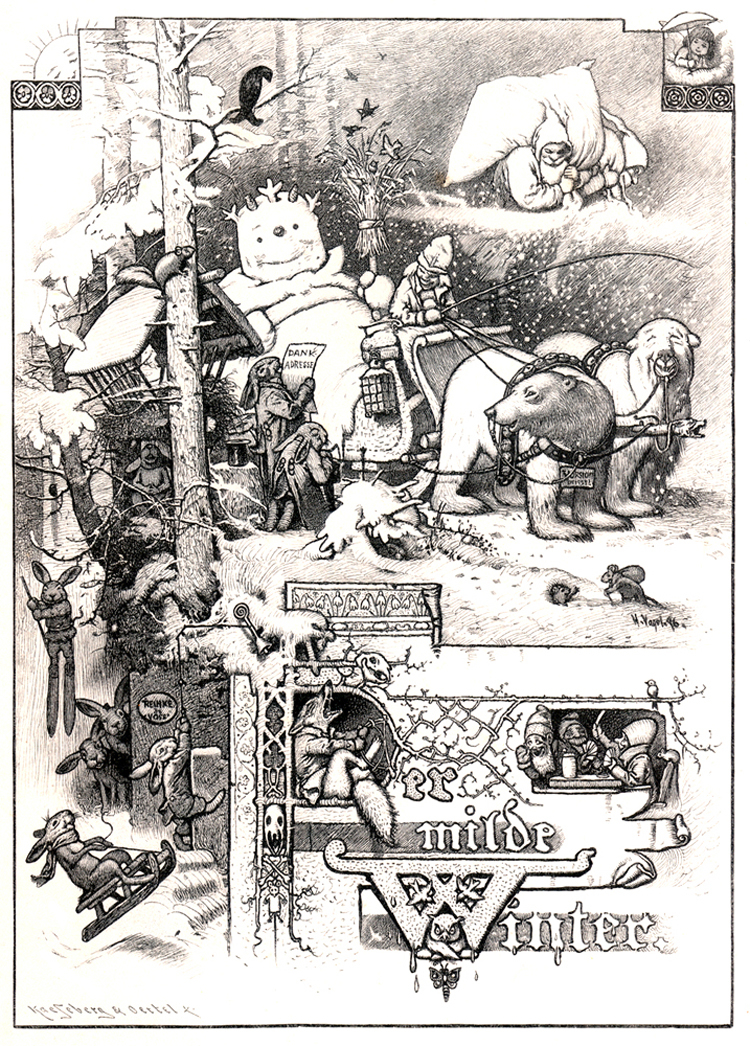
Arnie Fenner chose a classic piece of Americana with Caroling by Hank Porter.
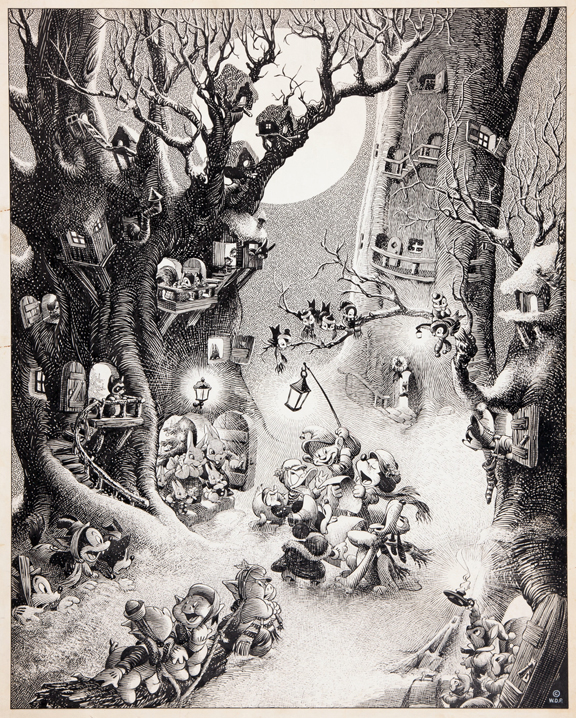
Jeff Soto and a sorta snow owl. Time is flying—I remember Jeff when he was in the Society’s Student Scholarship exhibition.
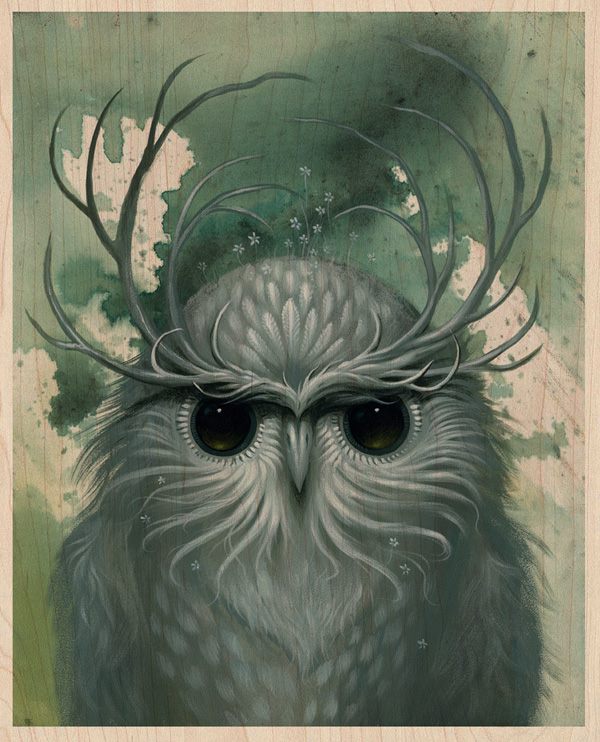
Yan Nascimbene, a contemporary French illustrator with an Asian influence.
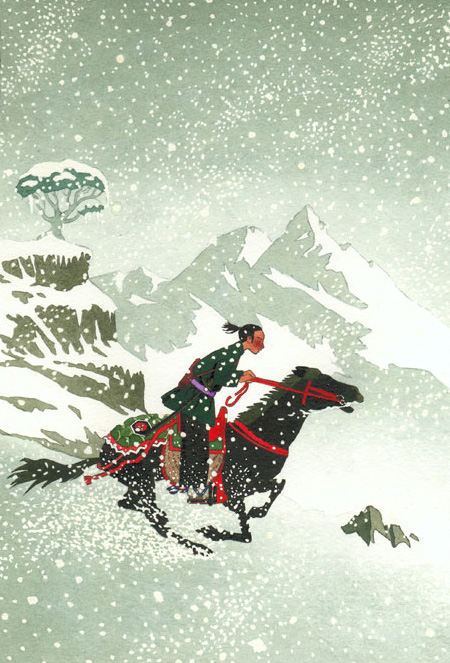
Zelda Devon (who has already shared many great art finds in our A is For Artist series) picked out William Stout’s White Bear King, an homage to Theodor Kittelsen.
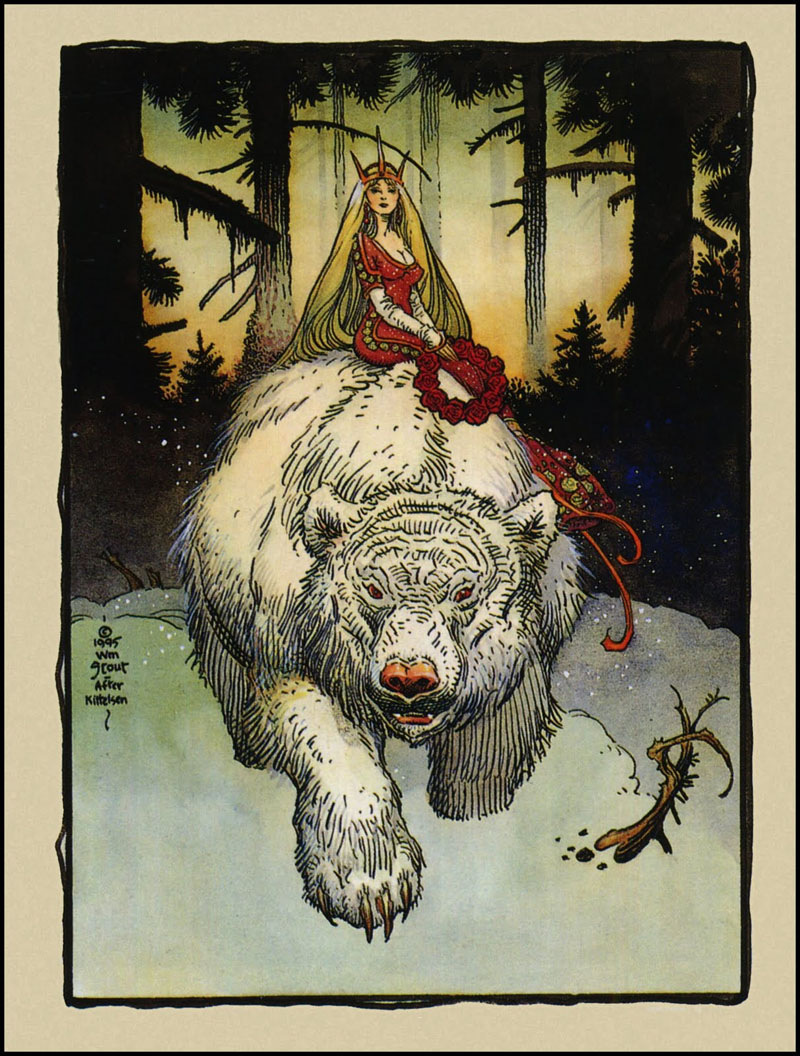
Omar Rayyan, always a delight.
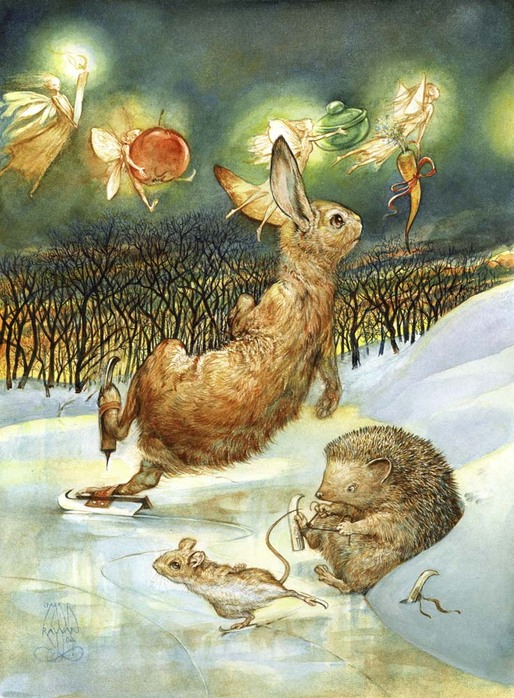
Zelda also picked this Edmund Dulac, pretty and fearful…
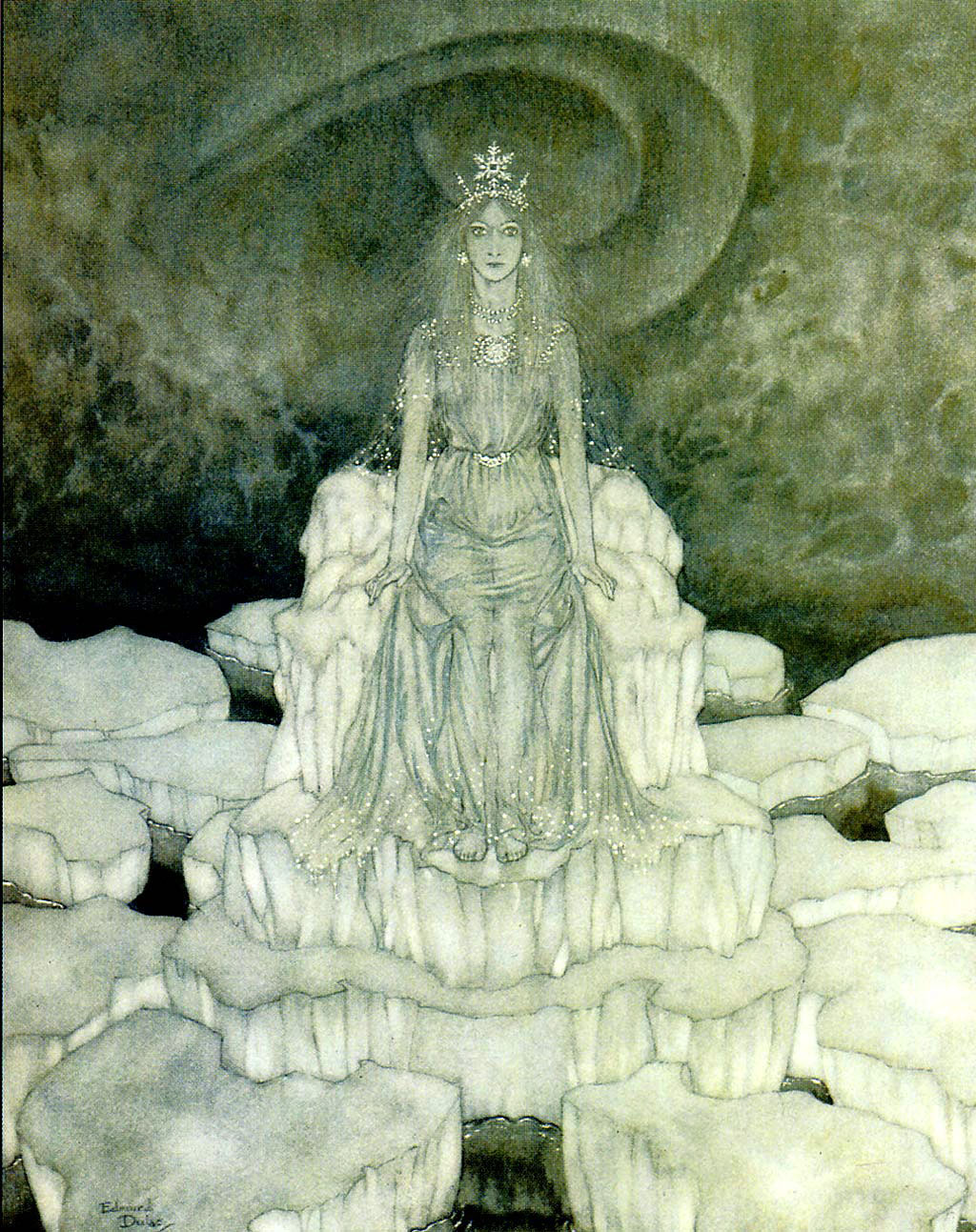
…while Julie Bell and Rebecca Guay picked this lovely Dulac.
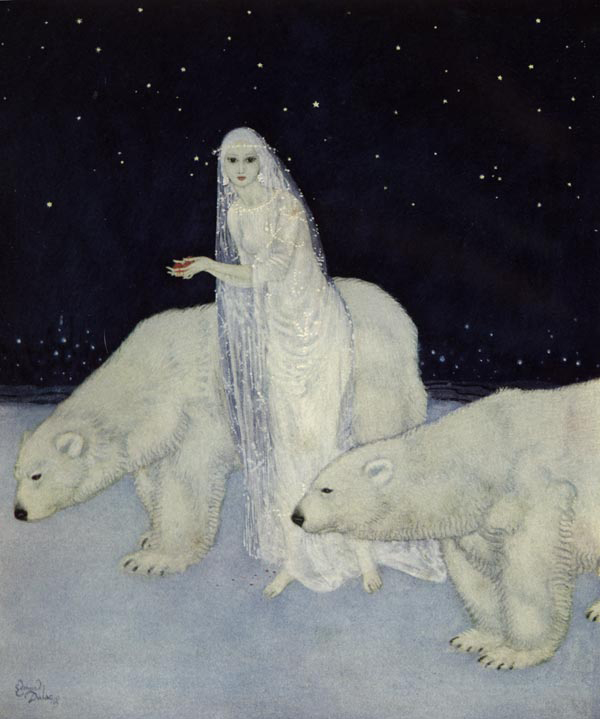
Greg Manchess chose East, by one of his favorite contemporary illustrators, Stephen T. Johnson.
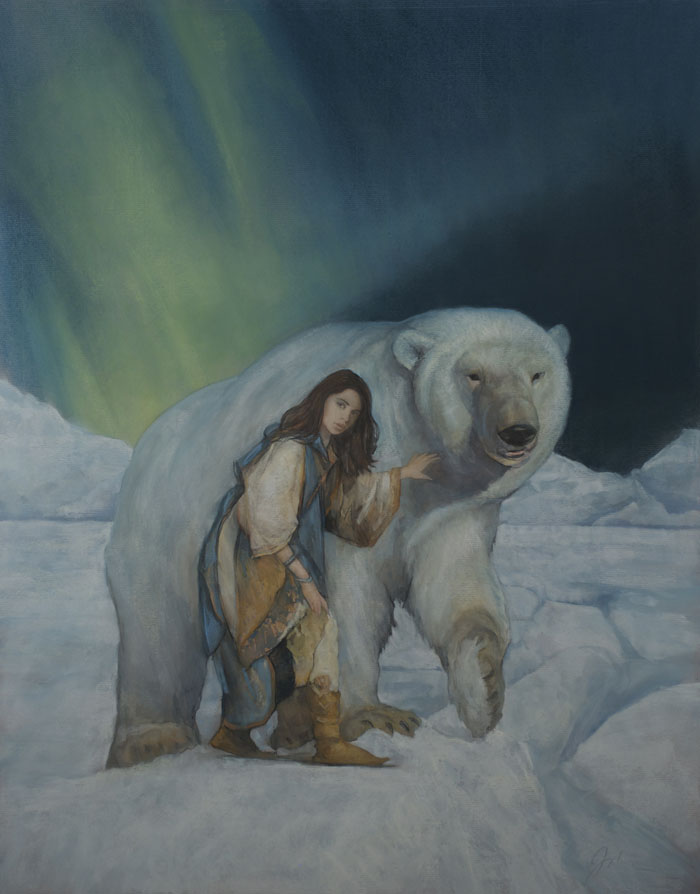
And here‘s a George de Forest Brush that I discovered on the art blog Muddy Colors.
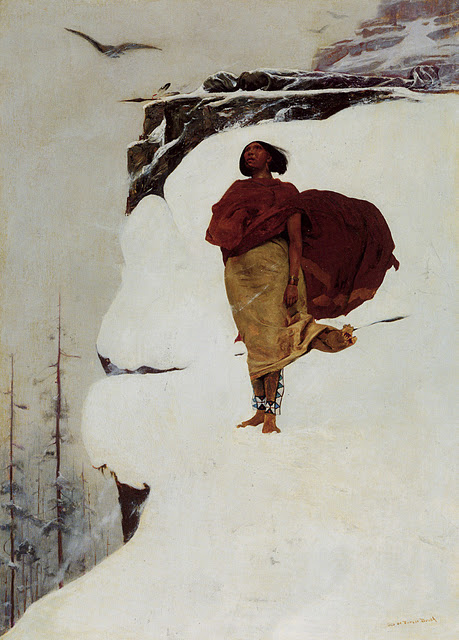
Another Greg Manchess pick, “Henry Ossawa Tanner had a timeless, loose hand with the paint, matched only by his wonderful ability to present only what’s needed and usually with a very subtle sense for capturing light.”
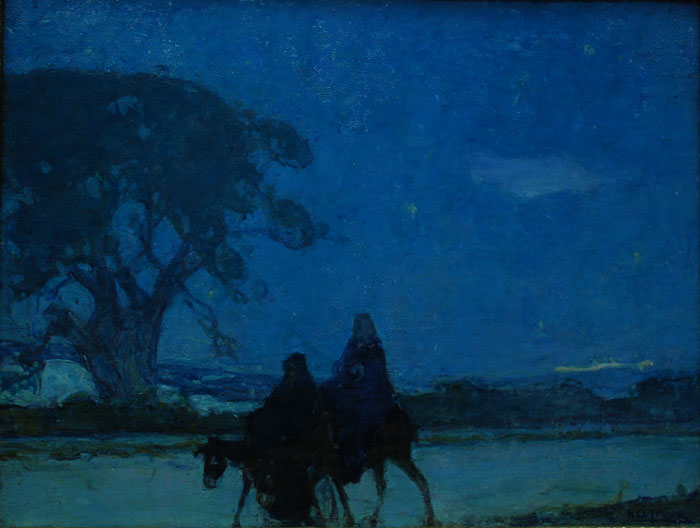
….and another, Adolf Hiremy-Hirschi’s Ahasuerus at the End of the World.
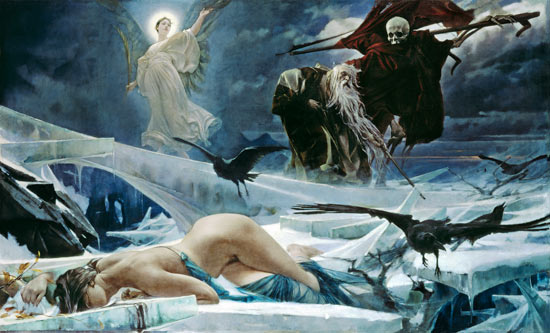
Kurt Huggins, who co-hosted our A is For Artist series, said, “I have two, and to me they’re kind of spiritually connected. The first is Andrew Wyeth’s Snow Flurries and the second is Caspar David Friedrich’s winter landscape. Both are painters that I feel you could describe as sublime. I love how even in the most empty of Wyeth’s paintings there’s always a presence, like they’re haunted. The space also dances between being very flat to epically deep all because of three little fenceposts. Haunted and vast, that feels like winter to me.
“As for Friedrich, while some people painted landscapes I think Friedrich felt nature, I can’t help but be awed when I look into the vast spaces of his pictures. You get the sense of just how large and grand nature is and how small and oft times lost mankind is in relation. There’s also quite the morose little story playing out in this picture.”
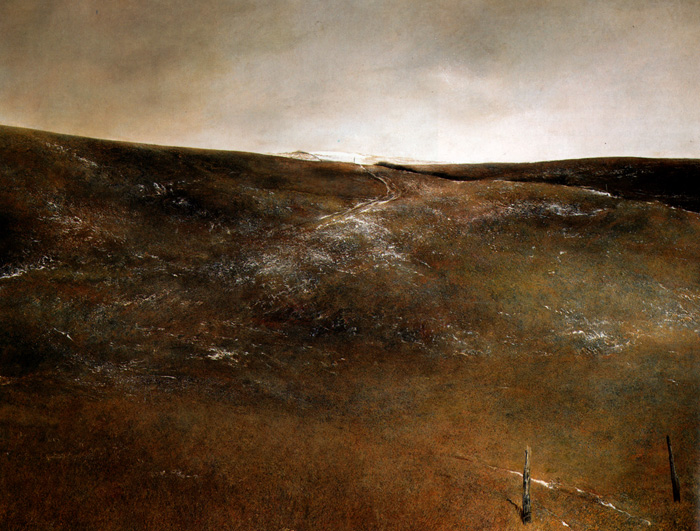
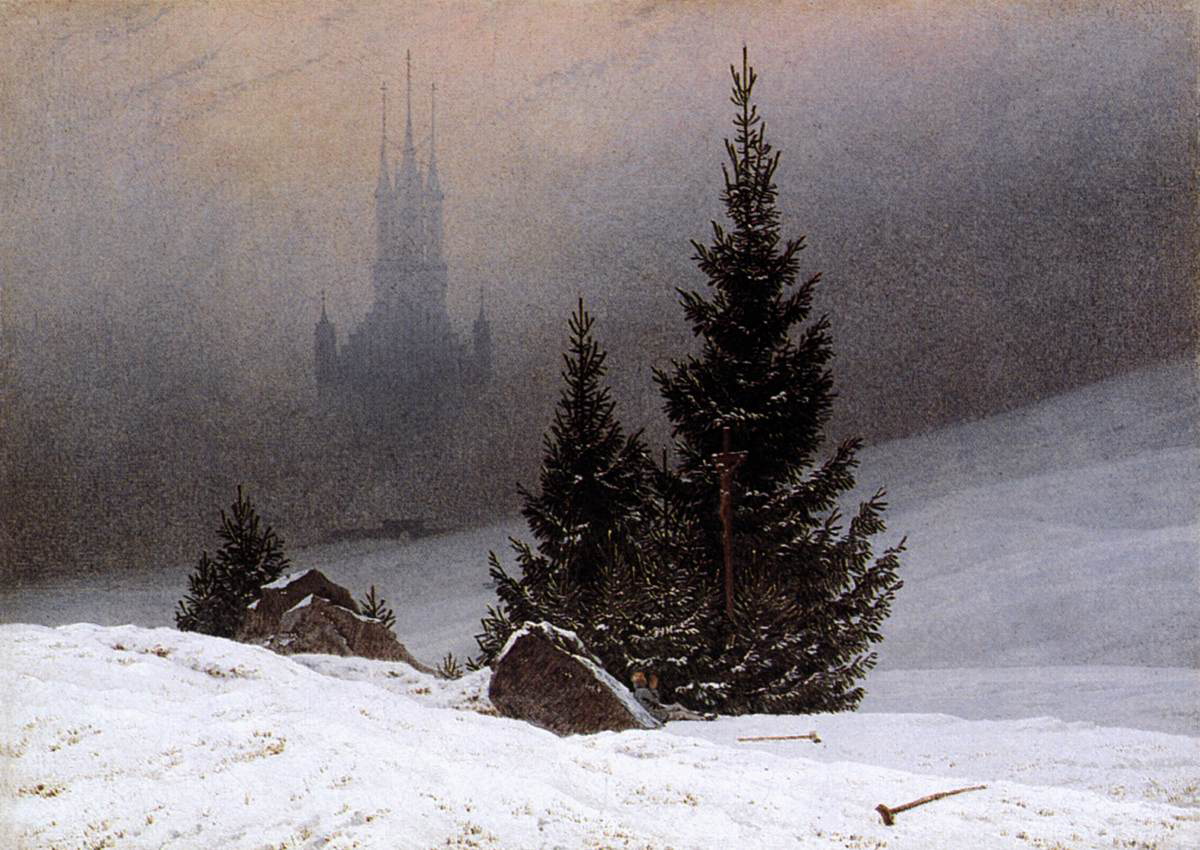
Greg Manchess, “This piece will stop most anyone at the Cincinnati Art Museum with its soft quiet beauty. The mood of a snowy winter night with warm window light is captivating.” The Midnight Mass by Edward Timothy Hurley.
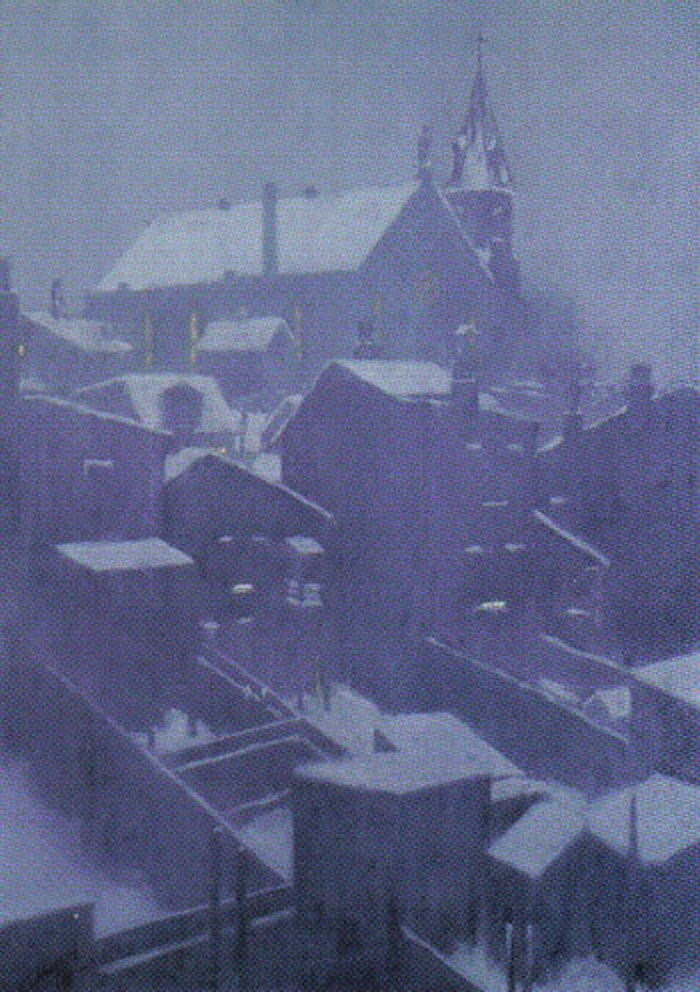
Greg also chose one of the most beloved illustrator’s-illustrator of the 20th century, Mr. Bernie Fuchs, “Subtlety upon subtlety…with action.”
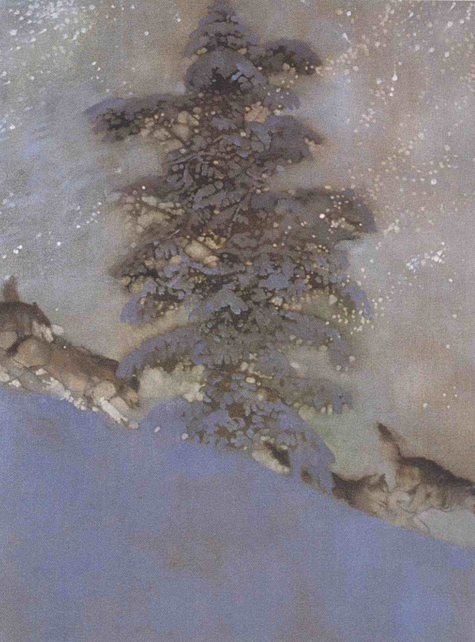
Dave Seeley and Arnie Fenner chose Greg Manchess’ Above the Timberline. Greg is currently adapting this painting into a full length story with pictures… lots of pictures.
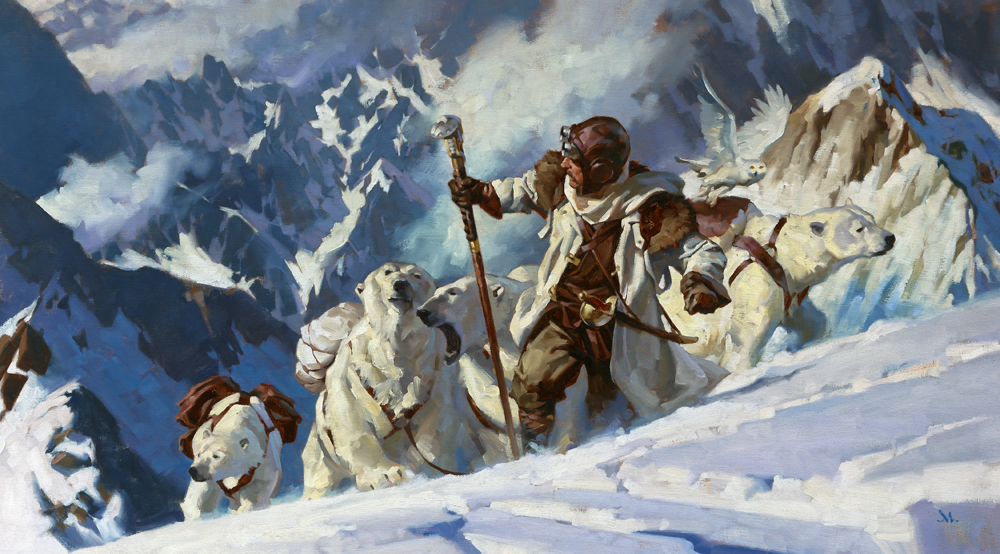
An art deco winter. (I’m unsure of the artist, if anyone knows please comment.)
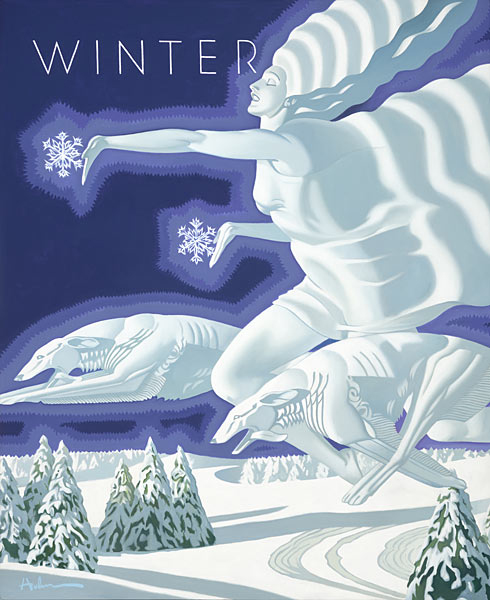
Sam Weber’s Ice Queen.
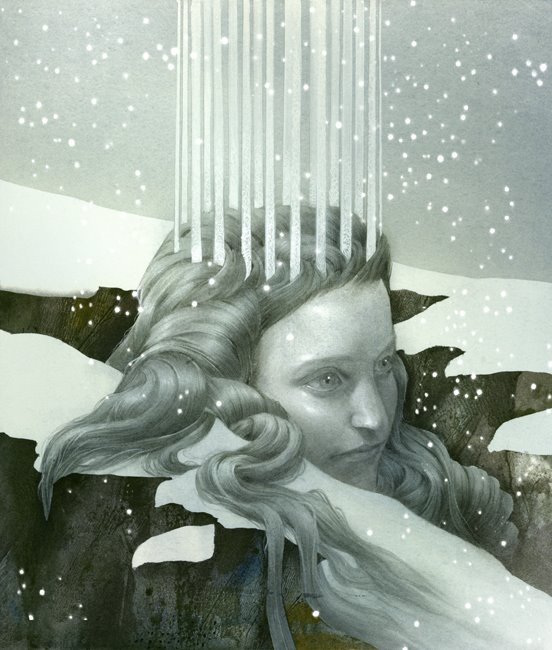
Of course Michael Whelan’s Winter Queen was sure to make an appearance. Todd Lockwood and Raymond Swanland both choose this one. For Raymond, Winter Queen holds a special significance, “I’ve always held winter as an ideal time to turn a little inward, in a good way. When asked about artwork that not only portrays winter, but reflects that introspection, my thoughts go directly to a piece I first came across in my early adolescence: The Winter Queen. The inspiration supplied by the piece came right at the time I was truly crossing the artistic threshold from sophisticated doodles to expressive creations. Not only does The Winter Queen remind me of the beautiful and mysterious side of the coldest season, it will always be a reminder of my personal springtime as an artist.”
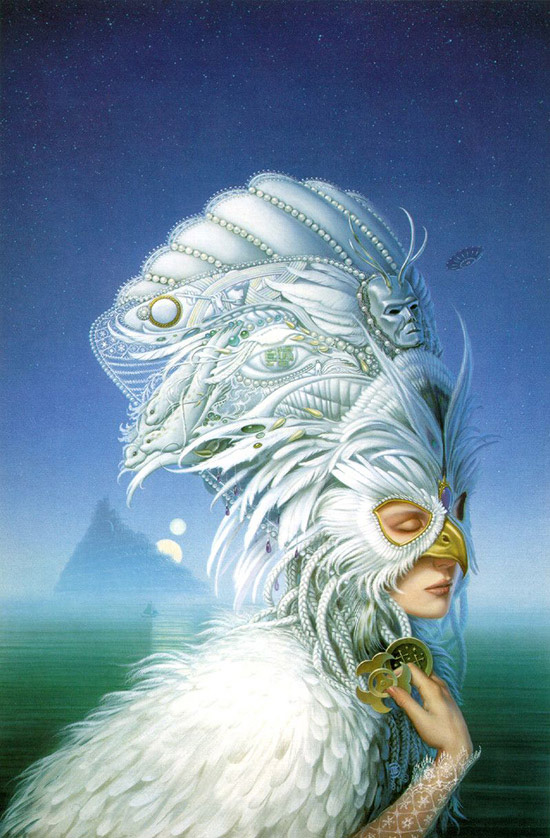
Jordin Isip sent in Edvard Munch’s Snow Falling on the Lane.
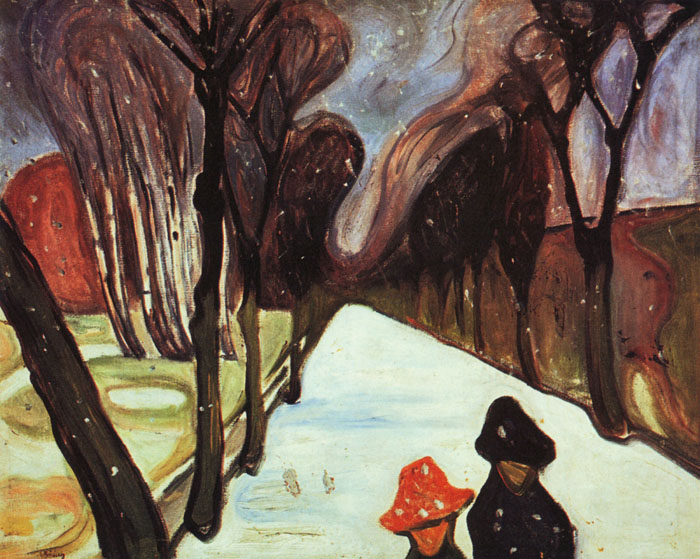
Viktor Vasnetsov’s The Snow Maiden.
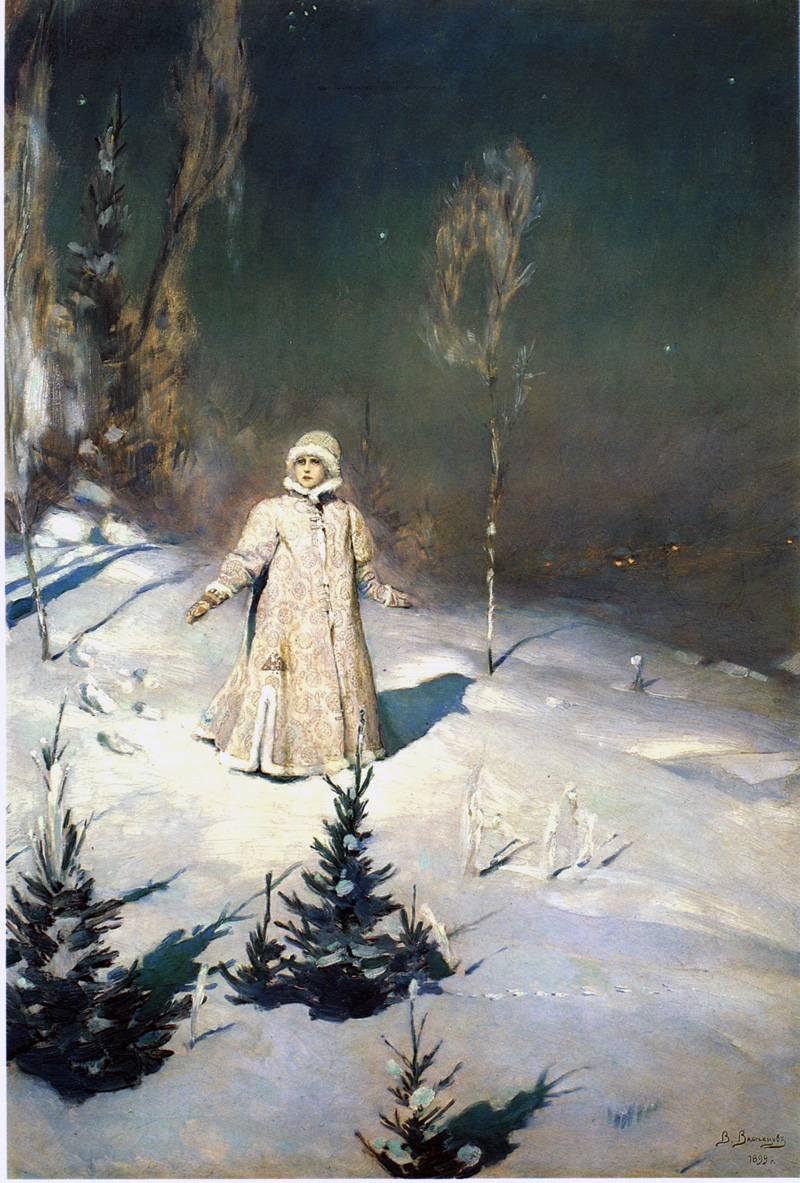
Greg Manchess’s polar bear attack from Nanuk. This was a Hamilton King Award winner.
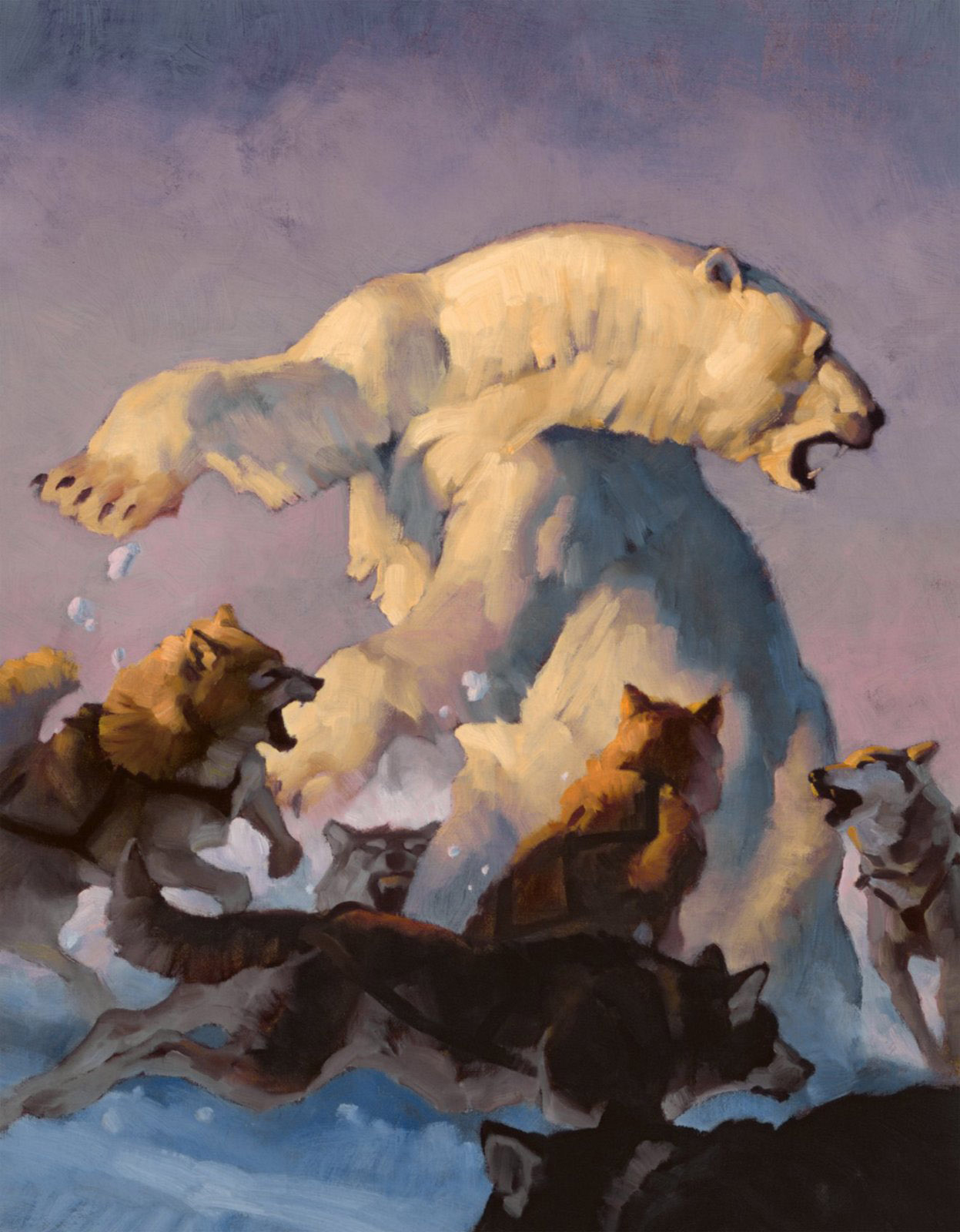
Lars Grant-West is a true kindred spirit to our non-human partners. It was no surprise that he picked a Bob Kuhn painting…
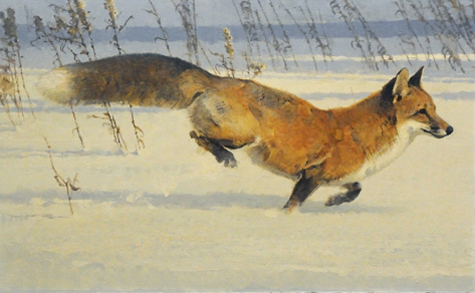
….and because Lars picked the fox above, I just had to include this Bob Kuhn polar bear…
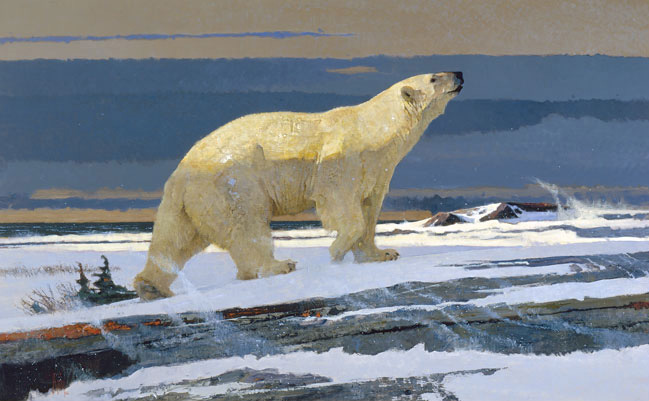
….and this Yan Nascimbene to jump back to the quick brown fox.
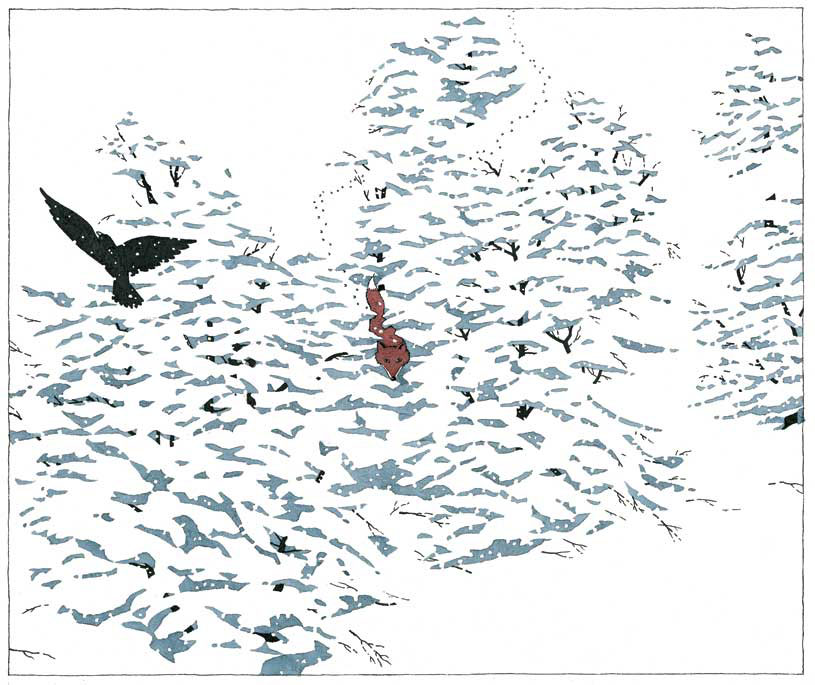
Ezra Jack Keats and The Snowy Day. Keats’s books are so simple and sublime. I remember Snowy Day and other “Peter” books clearly from childhood and was lucky enough to see a major exhibition at the Jewish Museum in NY this year. He was the first writer/illustrator to show working class urban neighborhoods and people of color in mainstream picture books.
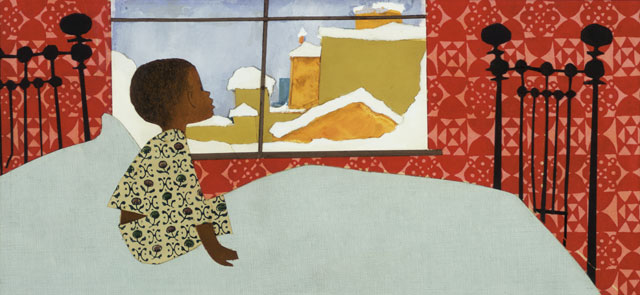
A lost Red Riding Hood by Erwin Madrid.
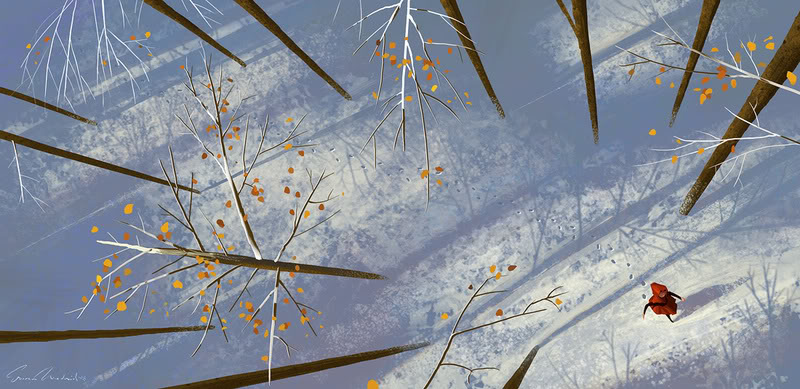
Hardie Gramatky. I’ve loved this painting for years.
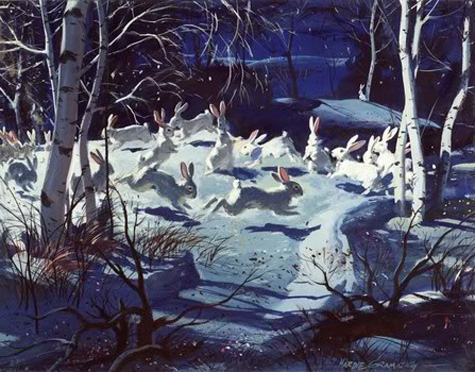
Ron Miller (no stranger to planet art) and Bruce Jensen both brought up Chesley Bonestell’s Saturn Seen From Titan. Ron also mentioned Casper David Friedrich’s Sea of Ice. Be sure to enlarge to see the unfortunate fate of the ship.
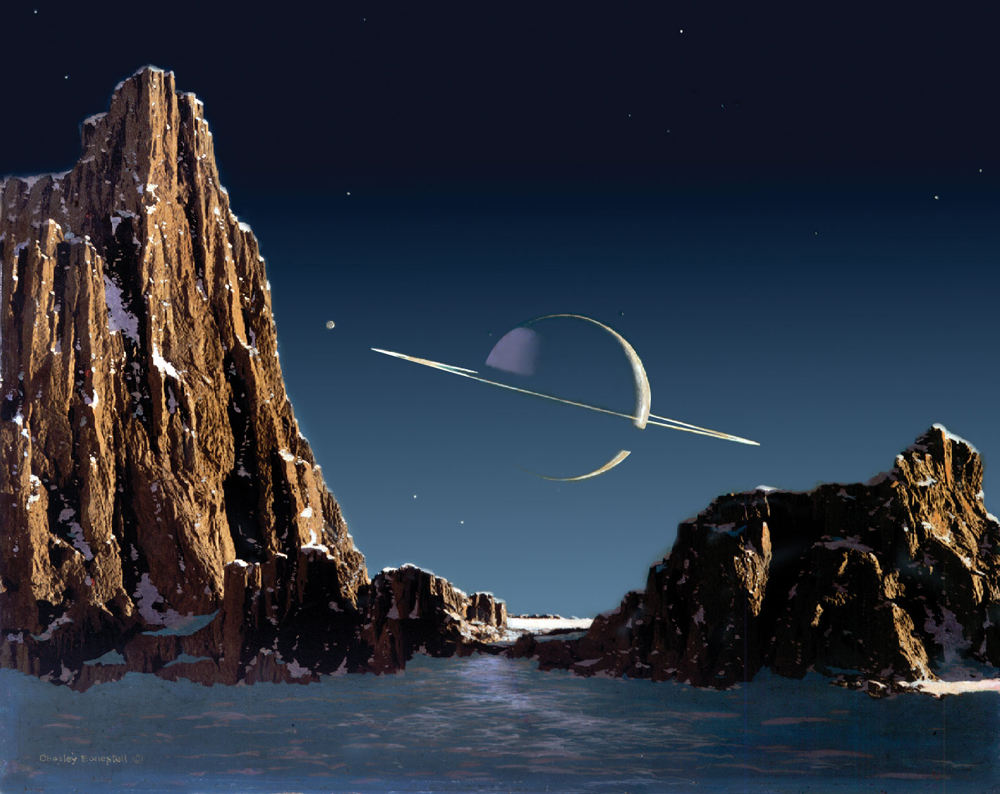
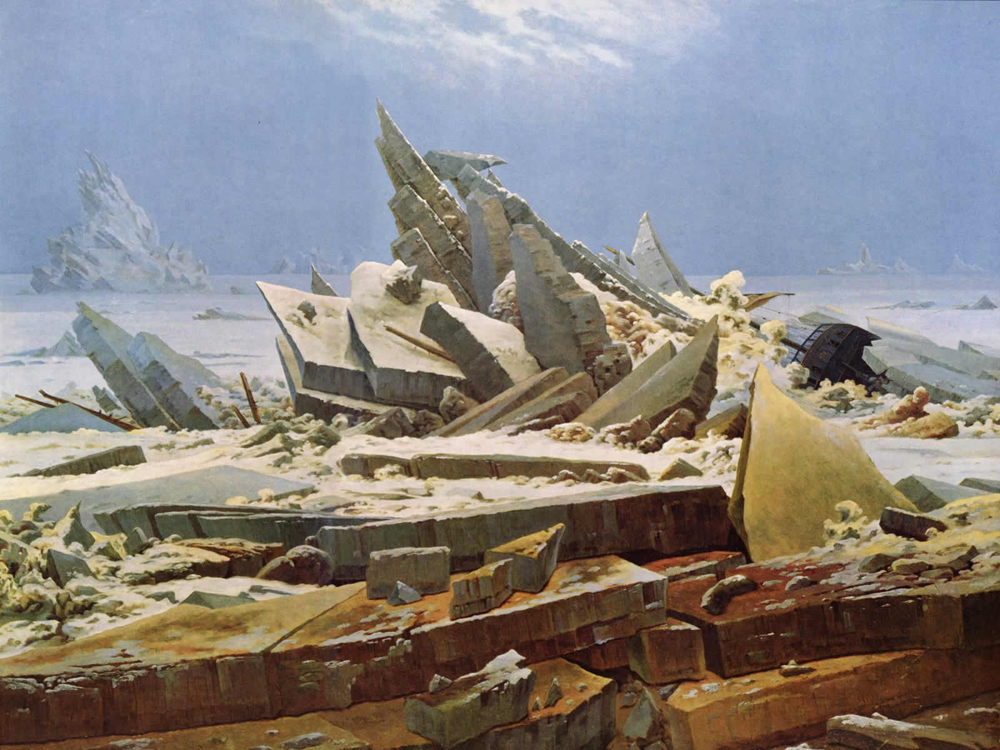
For future snows, Rick Berry picked John Berkey’s Humanoid Touch. It was high on Greg Manchess’s list as well.
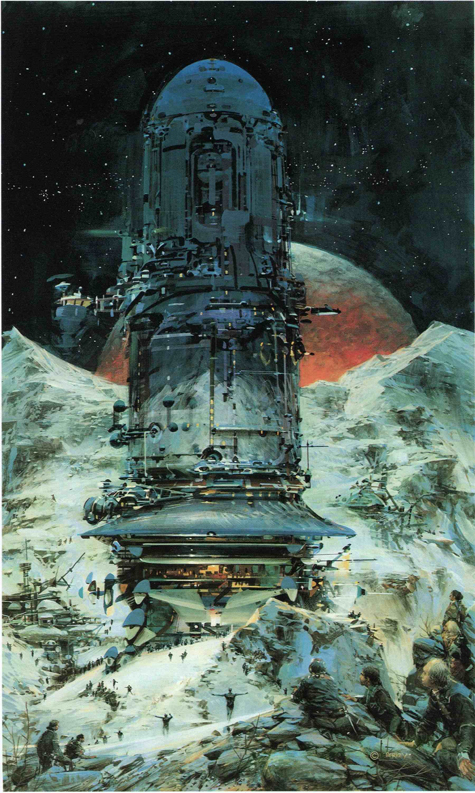
Zelda Devon, The Duel After the Masked Ball by Jean-Leon Gerome.
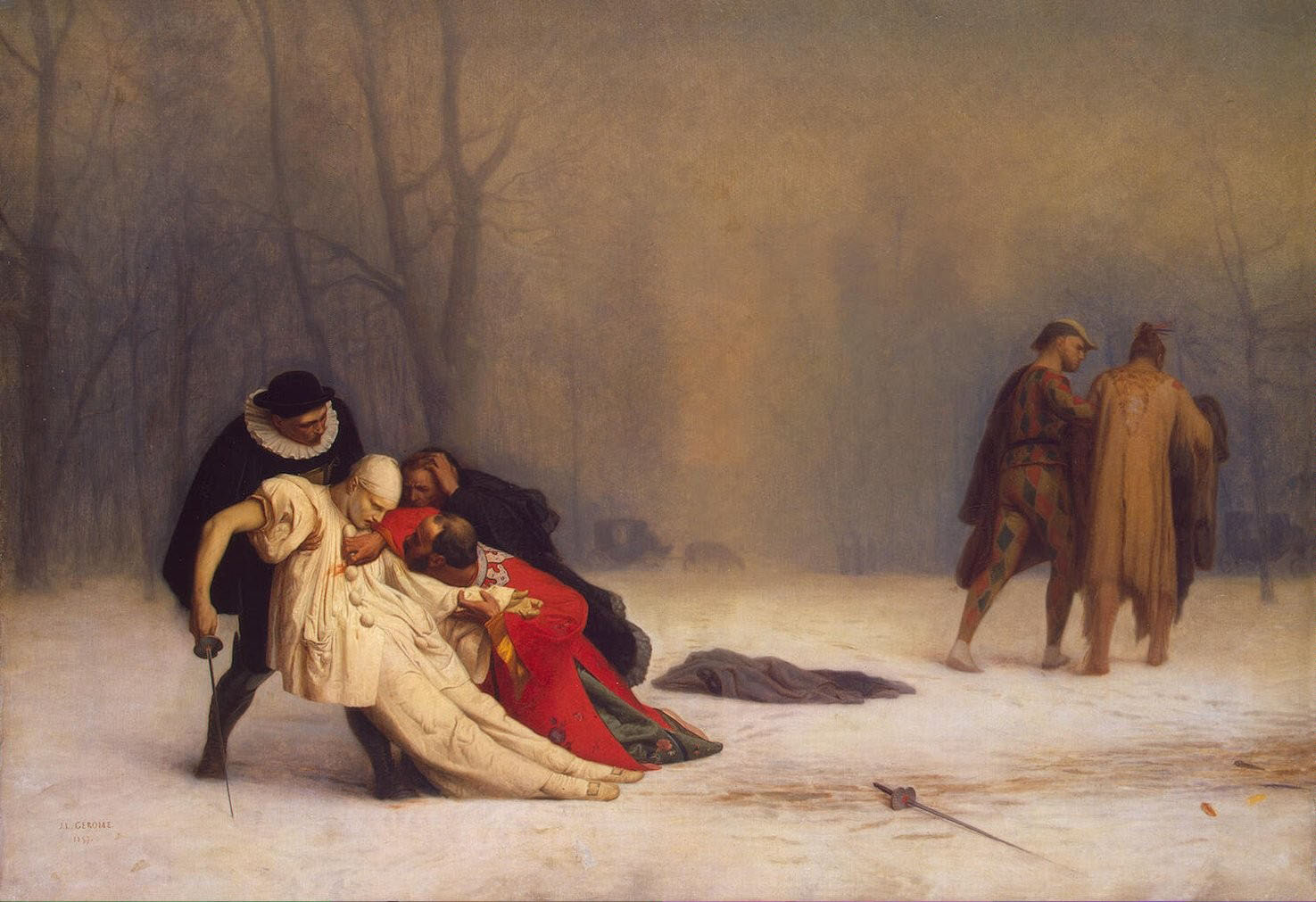
Another Giovanni Segantini from John Jude Palencar, chillingly titled The Punishment of Lust.
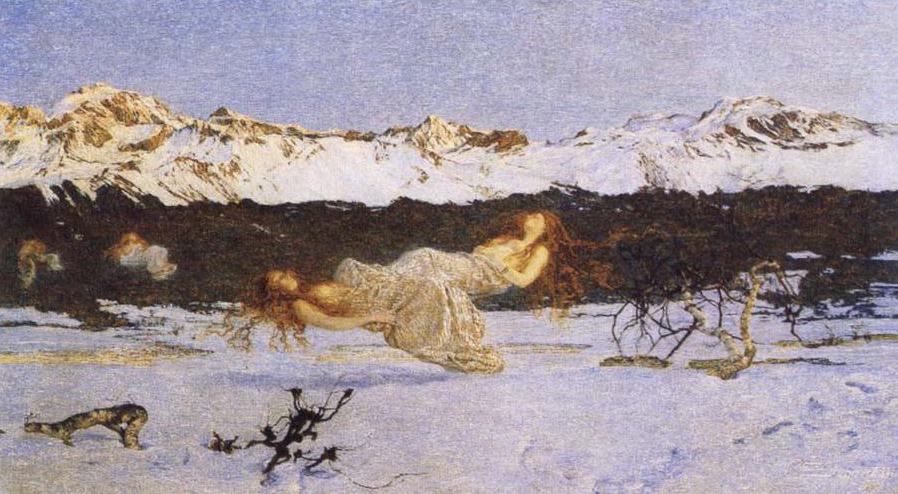
Cyril van der Haegen went for true-cold with Frederic Remmington and The End of the Day.
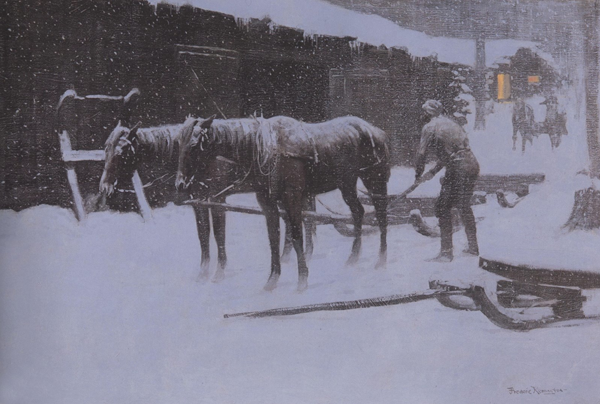
John Jude Palencar’s Muse and Reverie, one of his many paintings for Charles de Lint covers. He won the prestigious Hamilton King Award for this work.
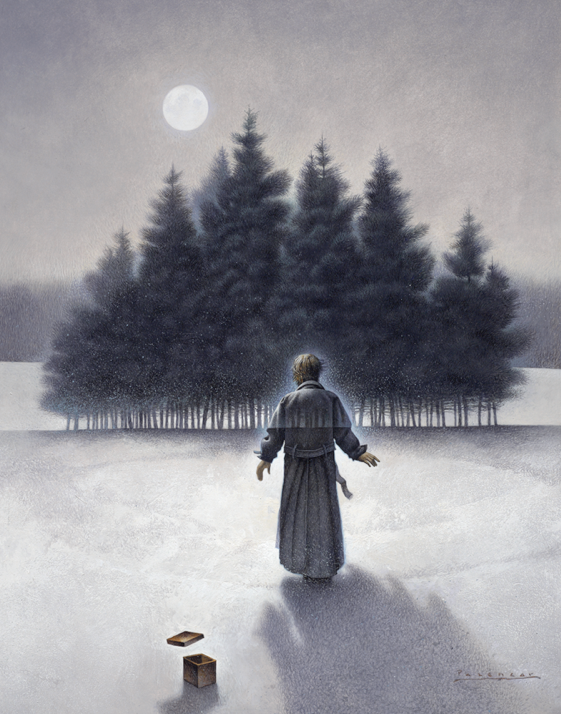
Stephan Martiniere picked John Carlson, Silent Places.
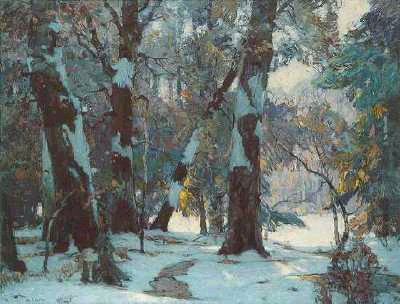
Chris Buzelli wrote in, “of course my first thought was the famous Bruegel’s Hunters in the Snow but I recently got my hands on a rare book about Isaak Levitan. He was a Russian painter, in the late 19th century, mostly “landscapes of mood” (in which the shape and condition of nature are spiritualized, and become carriers of conditions of the human soul.) He was part of The Wanderers group (Peredvizhniki) and sadly died when he was just 40. Here is his Forest In Winter. Incredible!”
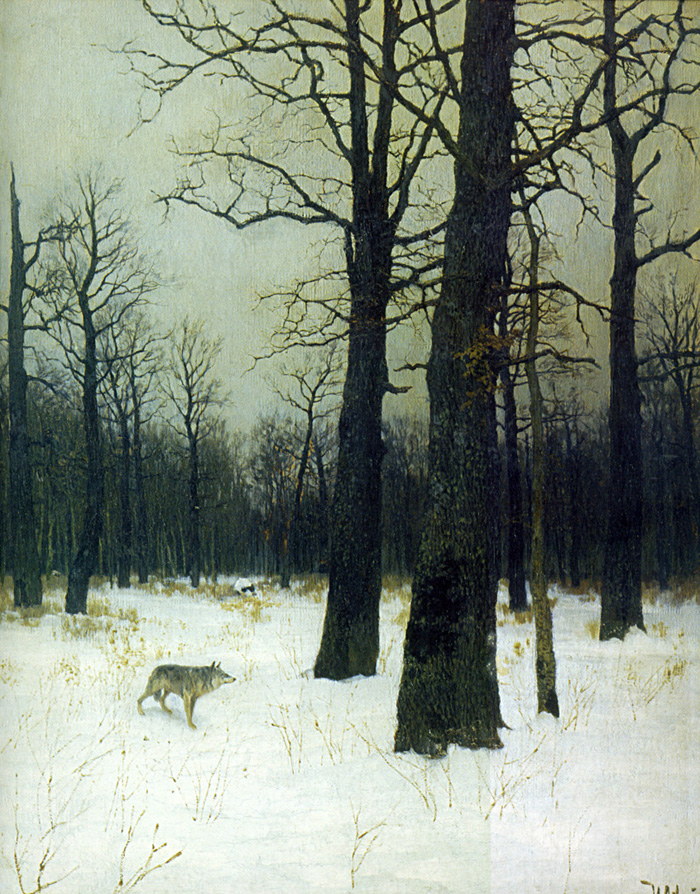
Sam Weber admits that he always wished he painted this piece by Will Cotton.
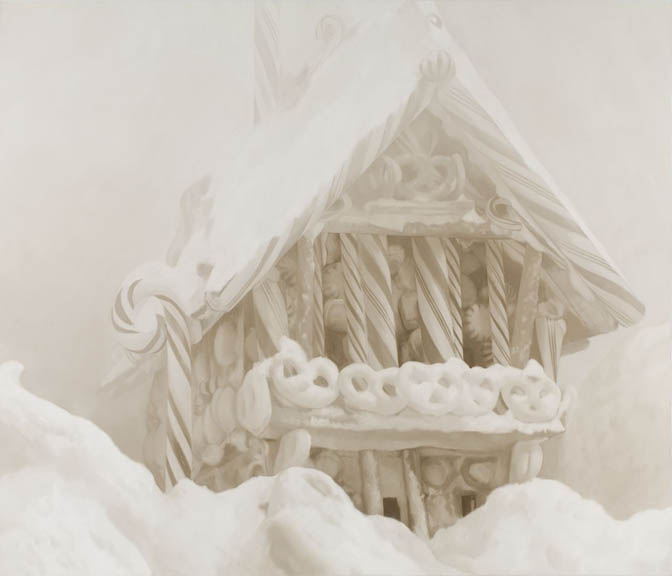
Donato Giancola chose Aleksey Savrasov’s The Rooks Have Returned. I would love to see the original painting (but of course that’s true for the whole list).
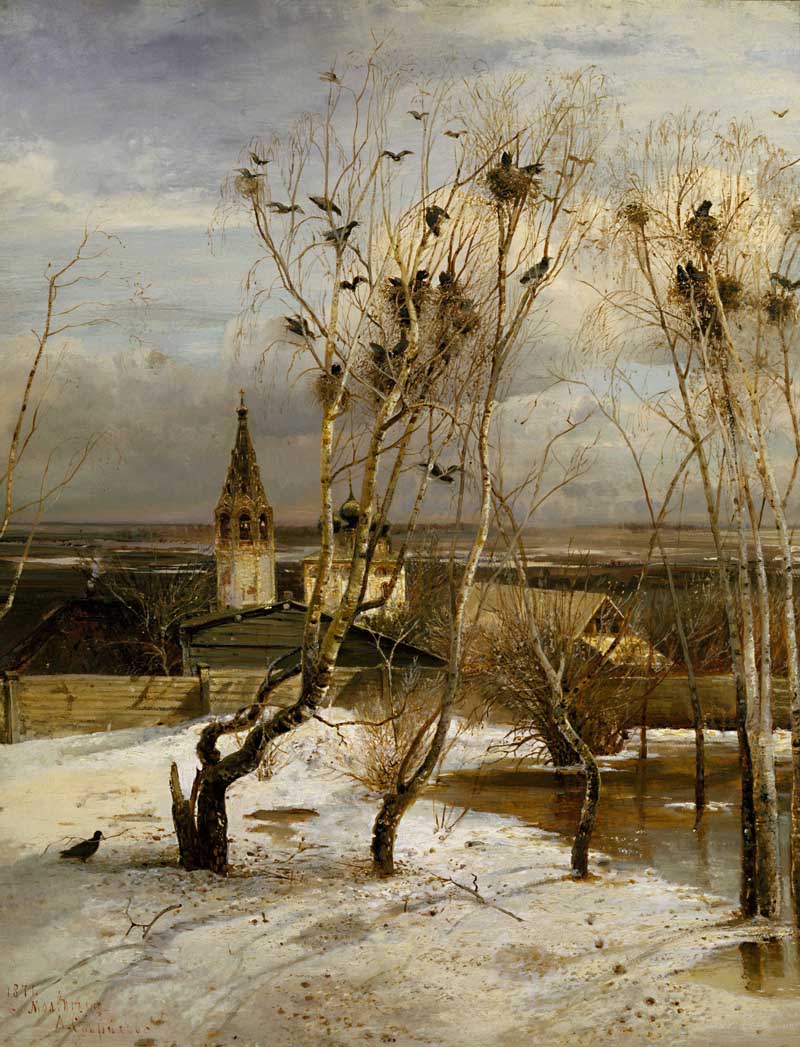
Two Alphonse Mucha paintings from Michael Whelan, “These pictures aren’t likely to make you feel warm about snow, but they are wonderful, both by Mucha, and quite different in style. The second painting is remarkable for its pathos, mysticism, and simplicity, and has long been a favorite of mine.”
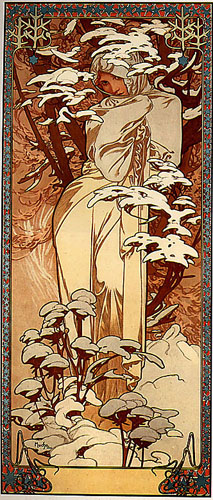
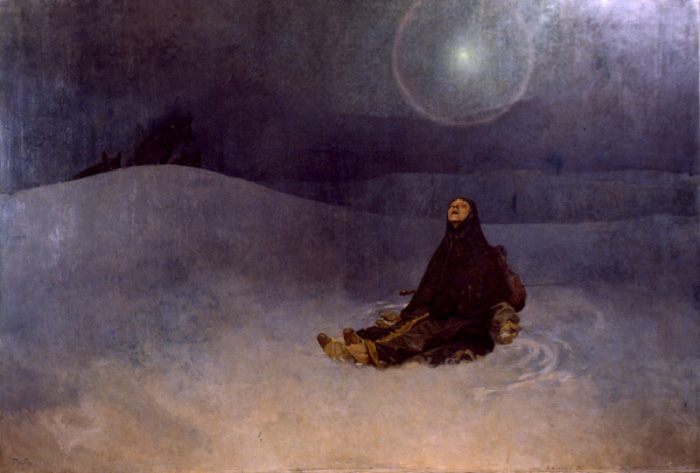
Lots of people chose Hunters in the Snow by Pieter Breugel, including Jordin Isip, Ron Miller, and John Jude Palencar.
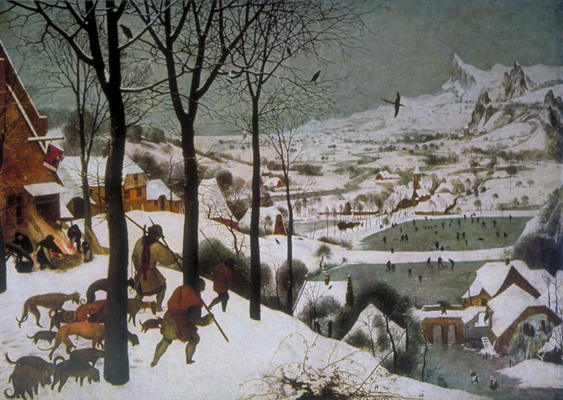
John Jude Palencar also picked this lovely Carlos Schwabe, The Gravedigger’s Death.
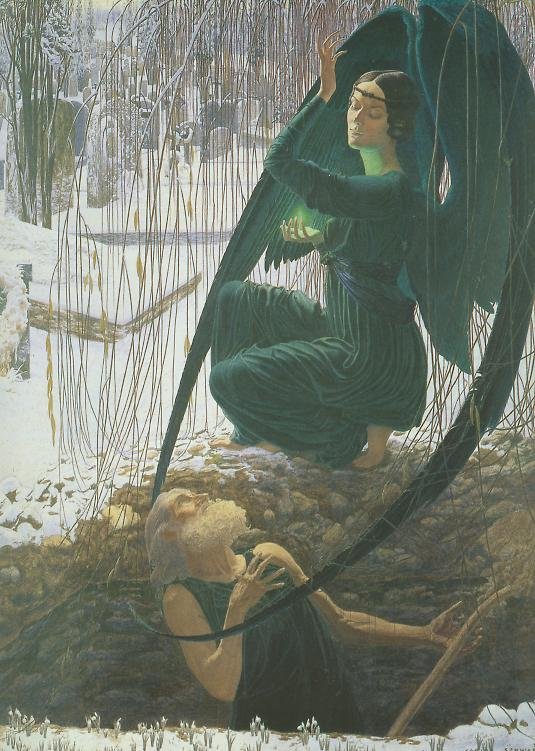
It’s easy to enjoy imagery of the cold outdoors but the real comfort of winter is being inside, whether it’s a book, a good movie, or friends keeping you company. Beatrix Potter and Peter’s world.
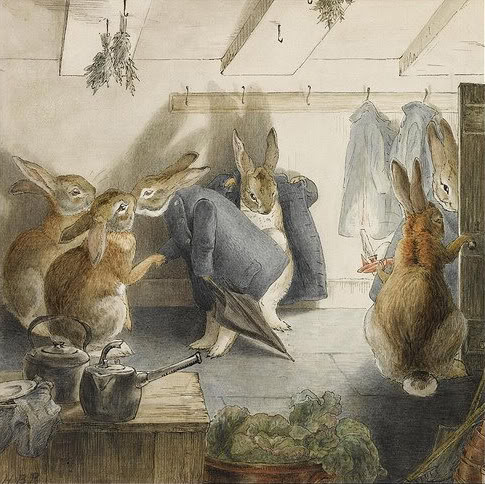
And finally, I knew John Jude Palencar would pick a lot of Andrew Wyeth and that was just fine with me. Wyeth spent his entire life painting his backyard in Chadds Ford and Maine and seemed to constantly see familiar surroundings as strange and beautiful and deeply, deeply personal. If I had to pick a favorite artist, it would easily be him. Here are just a few reasons why…
